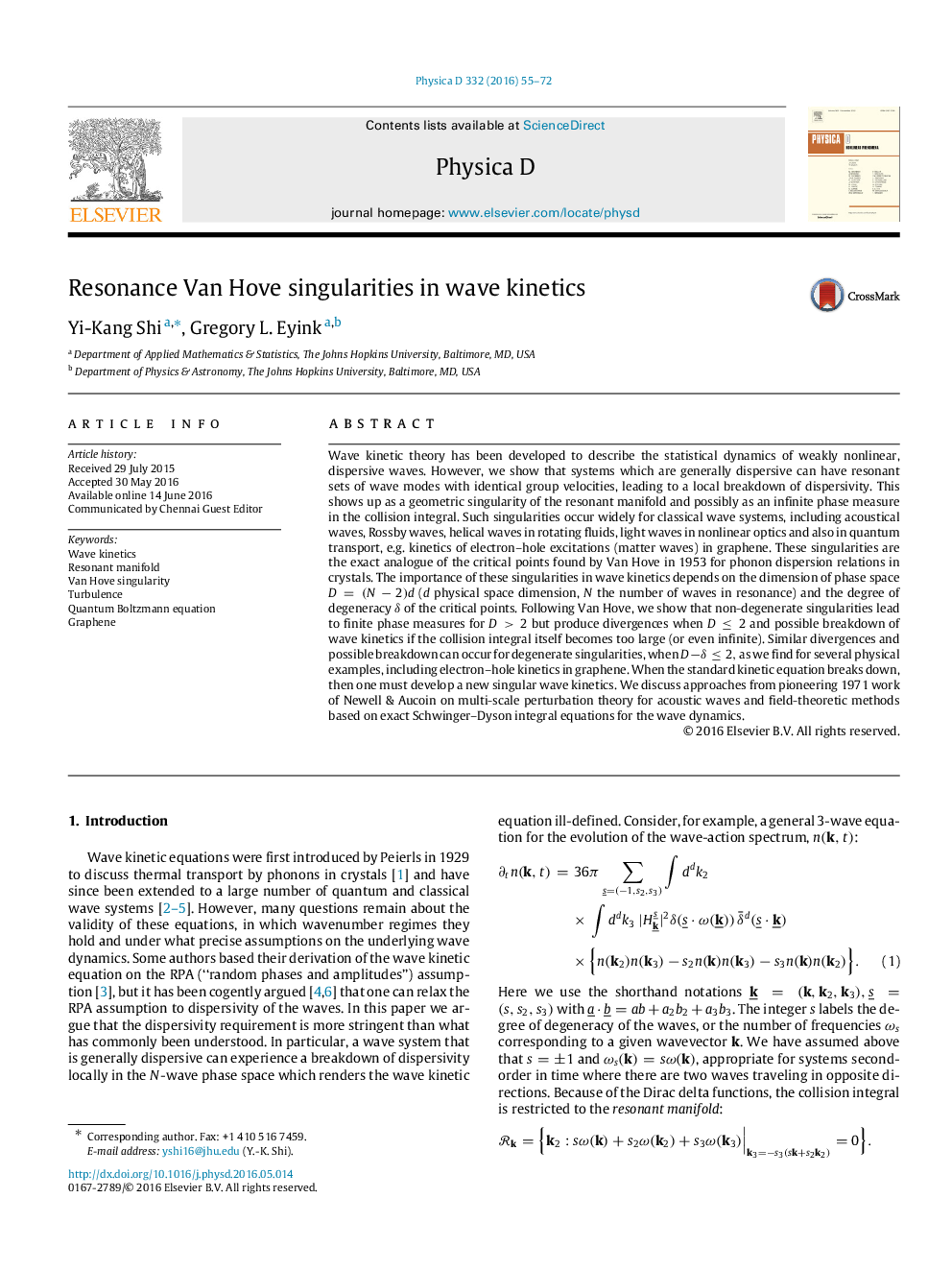| Article ID | Journal | Published Year | Pages | File Type |
|---|---|---|---|---|
| 1897097 | Physica D: Nonlinear Phenomena | 2016 | 18 Pages |
Wave kinetic theory has been developed to describe the statistical dynamics of weakly nonlinear, dispersive waves. However, we show that systems which are generally dispersive can have resonant sets of wave modes with identical group velocities, leading to a local breakdown of dispersivity. This shows up as a geometric singularity of the resonant manifold and possibly as an infinite phase measure in the collision integral. Such singularities occur widely for classical wave systems, including acoustical waves, Rossby waves, helical waves in rotating fluids, light waves in nonlinear optics and also in quantum transport, e.g. kinetics of electron–hole excitations (matter waves) in graphene. These singularities are the exact analogue of the critical points found by Van Hove in 1953 for phonon dispersion relations in crystals. The importance of these singularities in wave kinetics depends on the dimension of phase space D=(N−2)dD=(N−2)d (dd physical space dimension, NN the number of waves in resonance) and the degree of degeneracy δδ of the critical points. Following Van Hove, we show that non-degenerate singularities lead to finite phase measures for D>2D>2 but produce divergences when D≤2D≤2 and possible breakdown of wave kinetics if the collision integral itself becomes too large (or even infinite). Similar divergences and possible breakdown can occur for degenerate singularities, when D−δ≤2D−δ≤2, as we find for several physical examples, including electron–hole kinetics in graphene. When the standard kinetic equation breaks down, then one must develop a new singular wave kinetics. We discuss approaches from pioneering 1971 work of Newell & Aucoin on multi-scale perturbation theory for acoustic waves and field-theoretic methods based on exact Schwinger–Dyson integral equations for the wave dynamics.
